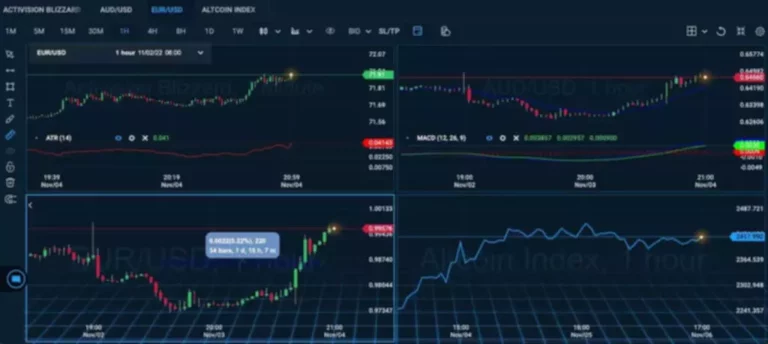What is Liquidity Bridge? Definition
October 11, 2024 2:30 am Leave your thoughtsContent
In summary, liquidity bridges empower market participants by bridging gaps, optimizing execution, and enhancing overall liquidity. Whether you’re a retail trader, institutional investor, or financial service provider, leveraging these bridges can unlock a world of opportunities. Remember, the true advantage https://www.xcritical.com/ lies in understanding how to harness this technology effectively.
How to choose a liquidity bridge: 7 things to consider
In the forex market, liquidity bridges can link your trading platform with multiple liquidity providers, like commercial banks, electronic communication networks (ECNs), larger forex brokers, or other financial institution entities. All of these companies include liquidity pools containing a diverse set of currency pairings with competitive pricing that will flow directly to your trading infrastructure. Furthermore, the rise of decentralized finance (DeFi) and cryptocurrency trading has expanded the scope of liquidity provision. Many liquidity providers are now bridging the gap between traditional financial markets and emerging digital assets, allowing access to a broader range of markets. This diversification ensures that traders have the liquidity they need not only for conventional forex pairs but also Blockchain for cryptocurrencies, tokens, and other blockchain-based assets. By embracing both traditional and digital assets, liquidity providers are ensuring that the forex market remains competitive, adaptable, and accessible to a wider range of participants.
Snapshot of the Bridge Ecosystem

Aggregators also shoulder ctrader liquidity bridge the responsibility of research overhead on what types of bridges do what, in addition to keeping up with trends in the bridge ecosystem. Furthermore, once a bridge is added to an aggregator’s smart contract, every subsequent upgrade of the bridge should be kept up-to-date by the aggregator, which takes maintenance out of dApp developers hands. With all of this in mind, it cannot be said that any one bridge design is better than another.

Partnering with Leverate for Top-Tier Liquidity
In this scenario, the company may choose to offer the venture capital firm equity ownership in exchange for several months to a year’s worth of financing. The venture capital firm will take such a deal if it believes the company will ultimately become profitable as this will see its stake in the company increase in value. Some liquidity bridge protocols, such as Pheasant Network, build an optimistic transaction validation system on top of the liquidity bridge model, functioning as an optimistic bridge. We are hoping that this list will help you make a smarter decision when purchasing a liquidity bridge. If you are looking for a solution right now, please give our Trade Processor bridge a try. One of the first things that a broker needs to think about when starting a business is a liquidity bridge.
First Things First: What is a Liquidity Bridge?
As such, cross-borderpayments can be faster, cheaper, and, more importantly, see less friction. Flagging potential risks is equally important, so we created Brokerage Business Intelligence (BBI). BBI creates custom alerts and reports based on trading activity that could pose a risk. In the fast-paced environment of financial markets, being notified and able to react in real time is critical. Moreover, an aggregator’s concentrated focus allows it to deeply understand the needs and preferences of power users within the niche, enabling them to tailor their offering accordingly.
A liquidity bridge is a type of blockchain bridge that facilitates the transfer of assets between networks by creating a liquidity pool, promoting interoperability within the ecosystem. This pool spans both the source and destination chains, allowing users to transfer assets by depositing their tokens into the pool and then withdrawing an equivalent value of tokens. Look for bridges that provide access to a diverse range of liquidity providers, including Tier 1 banks, non-bank liquidity suppliers, and other market players. The more liquidity sources available, the better the chances of obtaining competitive pricing and deep liquidity. The Forex bridge aggregates liquidity from multiple liquidity sources, combining their price quotes, depth of market information, and execution capabilities into a consolidated view.
- STP bridge (or protocol) streamlines communication between brokerage firms and banks, enabling direct trading on the interbank market.
- OneZero specialises in creating advanced multi-asset trading technology for many clients, including retail brokers, institutional brokers, banks, and liquidity providers.
- Having a liquidity bridge allows you to take advantage of all the benefits of having a multi-LP structure.
- Adopting liquidity bridges is a no-brainer for a brokerage platform, regardless of your niche, size and unique circumstances.
If the liquidity bridge includes a smart order routing system, then you can automatically route client orders to the best possible matches within available liquidity pools. Brokeree’s Liquidity Bridge is a comprehensive product that acts as a connector and quotes aggregator between several trading platforms and liquidity providers. The solution is especially useful while operating multiple quotes or market data sources. It also allows brokers to accurately configure the execution model, combining the advantages of a-book, b-book, and hybrid models. As the forex market continues to change, liquidity providers are leveraging cutting-edge technologies to enhance their services and stay ahead of the curve.

In addition to the risks above, there are tons of unresolved challenges that aggregators must face. This is very important from a security perspective because, cards on the table, bridges have historically acted as honeypots for hackers to attack. Five of the largest 15 DeFi hacks of all time stem from bridge-related exploits, resulting in $2 billion+ in value drained in roughly 24 months. Previously, we defined crypto aggregation theory by tweaking a framework introduced in Stratechery during the 2010s that described web2 business models pioneered by Airbnb, Netflix, and Uber. An incubator is a program that helps startups receive financial support and access to resources in…
Liquidity bridges are the glue between liquidity providers and trading platforms at the centre of a broker’s operations. These case studies demonstrate that liquidity bridges play a pivotal role in modern financial ecosystems. Whether facilitating cross-border transactions, bridging DeFi protocols, enabling CBDC interoperability, or stabilizing stablecoins, these implementations showcase the power of liquidity bridges. As technology evolves, expect more innovative use cases and success stories in the realm of liquidity management. In summary, liquidity bridges serve as vital connectors in the decentralized financial landscape, enabling seamless asset movement, efficient trading, and broader access to DeFi services. Whether you’re a trader, LP, or DeFi enthusiast, understanding these common use cases empowers you to navigate the evolving crypto ecosystem effectively.
Our research community is pooling expertise from across the industry to provide cutting edge insight on systemic risks from climate change to cyber security. These funds are usually supplied by the investment bank underwriting the new issue. As payment, the company acquiring the bridge financing will give a number of shares to the underwriters at a discount on the issue price, which offsets the loan. This financing is, in essence, a forwarded payment for the future sale of the new issue. One option with bridge financing is for a company to take out a short-term, high-interest loan, known as a bridge loan. Companies who seek bridge financing through a bridge loan need to be careful, however, because the interest rates are sometimes so high that it can cause further financial struggles.
It is especially useful to finetune brokers’ risk management strategy during uncertain market conditions and make informed decisions. Assets that have tokens on one chain and use mint and burn solutions to cross chain. Tokens are linked through the mapped and mapping contracts and Total supply is maintained. Moreover, centralised access to all liquidity channels simplifies your liquidity management duties, letting you raise efficiency across the board. As a result, your brokerage will meet even the strictest client expectations related to tight spread margins, optimal prices and fast execution. Credit and settlementrisks can also be reduced or fully eliminated via liquidity bridges.
In addition to varied verification methods, bridges also differ in the types of transactions that are conveyed between blockchains. The key to understanding the complex “bridge ecosystem” starts with something called the interoperability trilemma. The liquidity bridge instantly converts USD to GBP at competitive rates, ensuring timely delivery without intermediaries. Remember, successful liquidity bridge deployment involves collaboration, technical expertise, and a deep understanding of both source and target chains. Bridge financing offers a temporary injection of capital to keep an entity covered and able to meet its needs until it receives an infusion of cash or regular, long-term financing.
Right now, banks areeither forced to invest in liquid assets that can be used as collateral ormust hold foreign currency in either a foreign central bank or in theirrespective correspondent bank accounts. While it’s often better for the market when users and developers have more options… given the nuances of different bridge designs, there’s also too much complexity in finding the right one for the right use-case. Notably, bridge hacks have not been condensed to a single bridge verification mechanism – instead, hackers have exploited a variety of bridge designs. Yet, each time, an attacker circumvented these bridge designs to drain protocols (by phishing or by contract flaw). No bridge is a perfect solution in terms of security, speed, or connectivity across every blockchain. As per our extensive research, we do not believe the “bridge ecosystem” includes a single bridge that is perfectly secure, able to connect to every chain instantly, and capable of sending any type of message.
While there are highoperational costs, central banks which establish and operate liquidity bridgesmust also face other risks. As the industry shifts and expands to new trading platforms, a liquidity bridge becomes increasingly important for working as a translator and a common portal for all of these platforms. Flexibility has become vital, and our FIX API platform makes it easy to create new sessions for clients who prefer margin engines and those using Web/MT5 coverage accounts.
There are several types of liquidity providers in the forex market, including tier-1 banks, non-bank financial institutions, and prime brokers. The forex market’s stability and efficiency are driven by liquidity providers and market makers (LPs), who act as the backbone of trading activities and help construct a deep order book. By ensuring that there is always enough supply and demand for currency pairs, LPs enable traders to execute orders quickly, reducing slippage and enhancing profitability. In this article, we’ll explore the critical role of liquidity providers, their types, and why choosing the right partner can make or break your trading business.
Categorised in: FinTech
This post was written by vladeta



